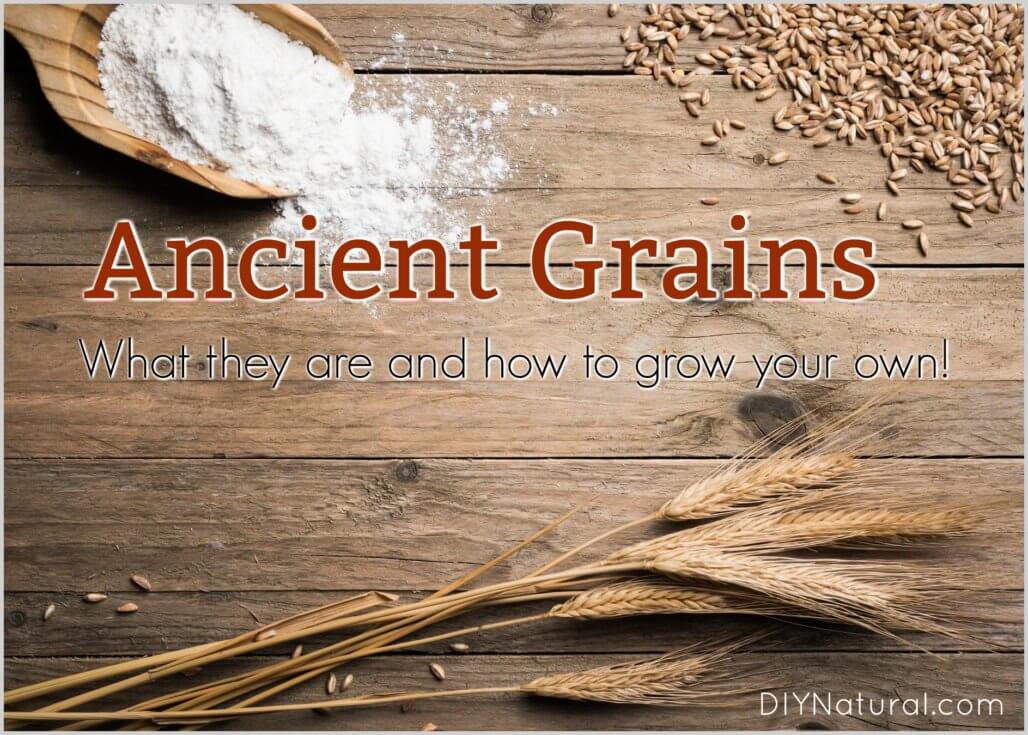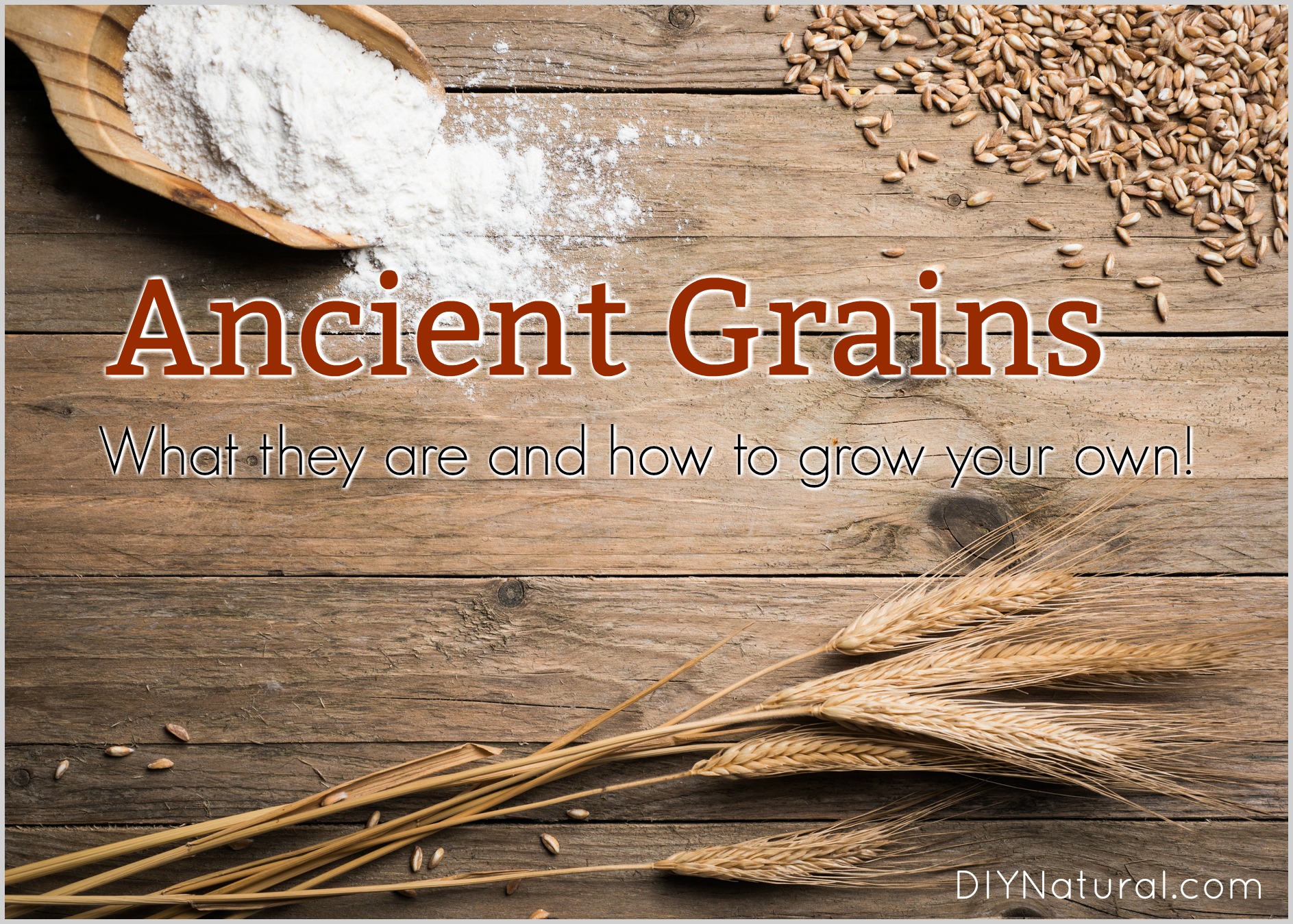
Ancient grains, grown by our ancestors, were more nutritious heirloom varieties of grain grown without lab modification, chemical fertilizers, or pesticides.
Surprisingly, there are a number of people going back to the old ways of doing things, in spite of all the new and improved things on the market these days. From gardening to cooking, and even making soap, the shift to DIY-ing is growing daily. And with the help of social media, people are becoming increasingly aware of what’s in their food and how it’s grown. Most soy and corn grown in the U.S. is genetically modified, so many people are going back to eating ancient grains.
What are ancient grains?
Ancient grains are those that were grown by our ancestors, sometimes going back thousands of years. They are often heirloom varieties of grains that are grown today. Ancient grains were grown without being modified in a lab, without chemical fertilizers, and without pesticides. They were more healthful and provided more nutrition than most grains found in stores today.
Types of Ancient Grains
There are many types of ancient grains, and this is just a small list of some of the most popular varieties:
Spelt
Spelt is a type of wheat grown as far back as 5,000 BC. It is high in protein, low in fat, and contains vitamins and minerals like calcium, iron, and niacin. Besides using as a cereal and bread grain, spelt is also distilled in Poland to make vodka! (If you don’t want to grow your own, buy organic spelt flour or organic spelt berries here.)
Amaranth
Nearly as old as spelt, amaranth has been cultivated for around 8,000 years. This ancient grain is gluten-free. The leaves are eaten as a vegetable similar to spinach and the seeds are left to form. There are many types and colors, including a florist variety called “Love Lies Bleeding,” which is a deep red. Amaranth contains nearly the same amount of protein as spelt (14%), and slightly more fat. A 1 cup serving yields a whopping 106% of the USRDA of manganese! (You can find organic amaranth grains here or amaranth flour here.)
Einkorn
Einkorn is another type of wheat, and has been found in pre-pottery Neolithic sites. It is relatively short and therefore has short seed heads, and is not very nutritionally dense. So why grow it? Einkorn is tolerant of poor soil and dry conditions where other grains have problems. Traditional crops won’t grow in arid conditions where einkorn will. (If not growing your own, find organic einkorn flour here.)
Teff
Similar to quinoa and millet in cooking, teff contains fiber, iron, calcium, and protein. Teff is a naturally gluten-free food that has been cultivated for thousands of years. It is a type of grass that produces seeds that can be cooked or ground as flour. (Buy teff flour here if you don’t want to grow your own teff.)
Rice
Rice is one of the oldest grains known to man, and one of the most versatile. It is typically grown in flooded paddies, mainly for weed suppression. However, it is possible to grow rice without using the paddy method. I have a friend in North Carolina who grows five types of rice and only floods one field. Although, it does still need ample water to grow. (Rice is also a gluten-free ancient grain.)
Wild Rice
Not a true rice, wild rice is actually a grass. It grows mainly in Canada and the upper Midwest, Florida, Texas, and China. Wild rice was, and still is, a very important crop to the Ojibwa of Minnesota and Wisconsin. It is prized for its nutty flavor and hearty texture.
How to Grow Ancient Grains
Like most grains, a well-draining fertile soil is best. You can plant directly in the soil, at a depth of no more than 3 times the length of the seed. Dig a trench of the appropriate depth, place the seeds in the trench, cover lightly, and water well. Water daily for a week or so. Germination should occur within 5-7 days.
You can also pre-germinate the seeds. Lay the seeds on a paper towel or something similar. Place inside of a plastic bag or a glass jar. Water well, then drain off the excess water. Similar to growing sprouts, water twice a day and drain. You’ll see sprouts within a few days. Plant when you see the seeds putting out roots.
You can usually harvest seeds from your ancient grains within 4-6 months.
How to Roll Your Own Grains
If you want rolled grains, like rolled oats or wheat, you can make your own. A pasta machine will work well, but you can also use a rolling pin or a meat tenderizer. The trick is to get the seed kernel while it still has moisture in it. If it dries out too much, it will just shatter.
I make a tube out of parchment paper and load it up with grain. Then I run it through a wide setting on a pasta machine. Go gradually thinner until you’re at the width you want. Open the tube, dump the grain on a baking sheet, and dry overnight. (You can also slow roast the grain at a low temperature for 20 minutes or so.) Finally, store in a sealed container and use like you would any other grain.
Have you ever used or grown your own ancient grains! If so, share your experience with us!
*******




I just wish that you had indicated whether or not each grain was gluten free. I know there are a few that are. I also know that usually these ancient grains are better for us, and that often gluten intolerance isn’t problematic, but I think that until our guts can handle gluten, we should be safer than sorry! My daughter is, and I’d like to be able to tell her which A.G. are gluten free so she could try them for awhile and then switch to the normal ones to see if her gluten issues have changed.
Another helpful addition would have been to give us places where we could get such grains.
Thank you. And thank you for the article!
Thanks for the suggestions, Carol! That information has been added!
Thank you SO much!